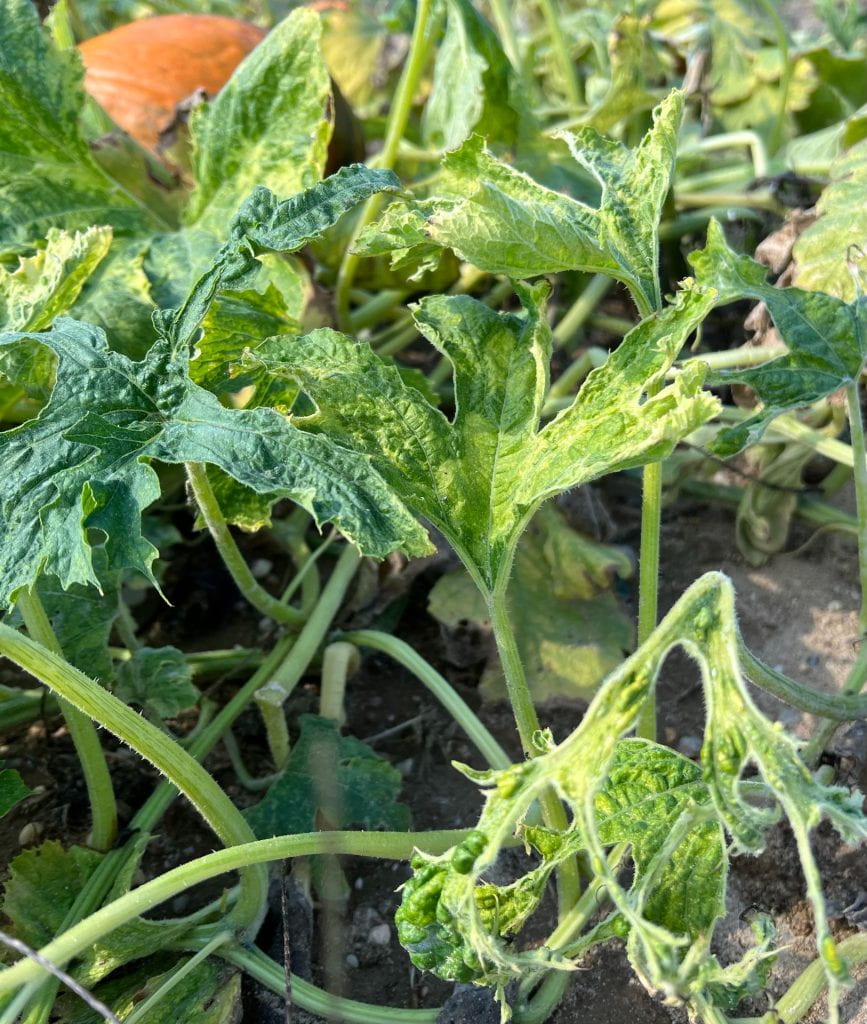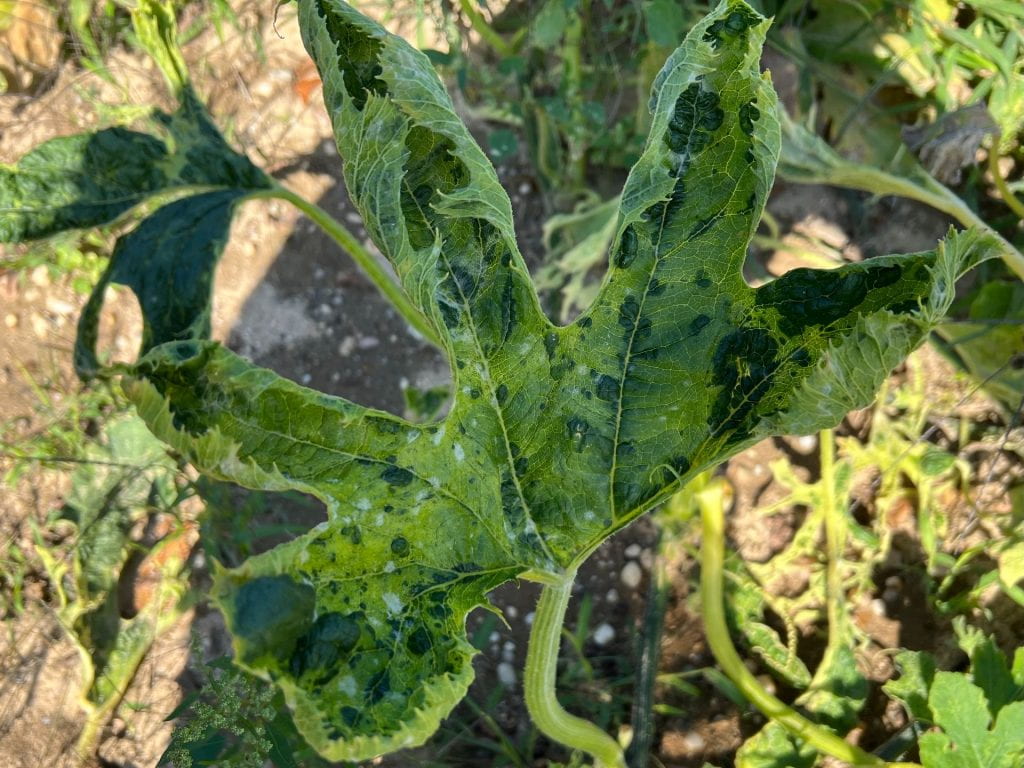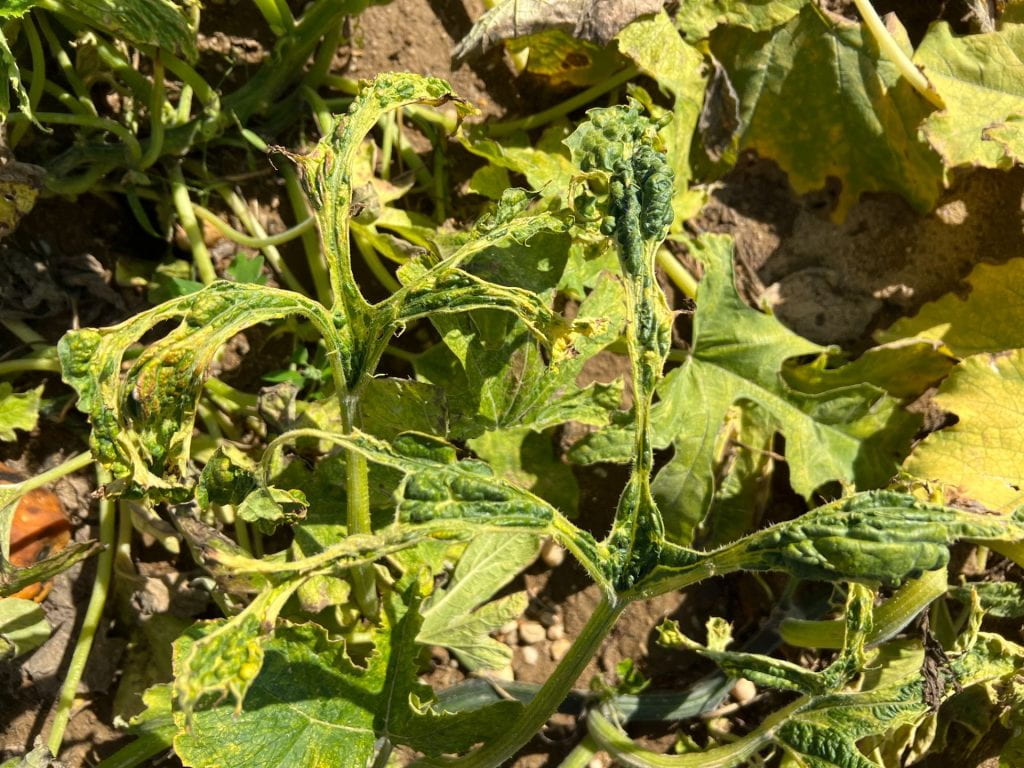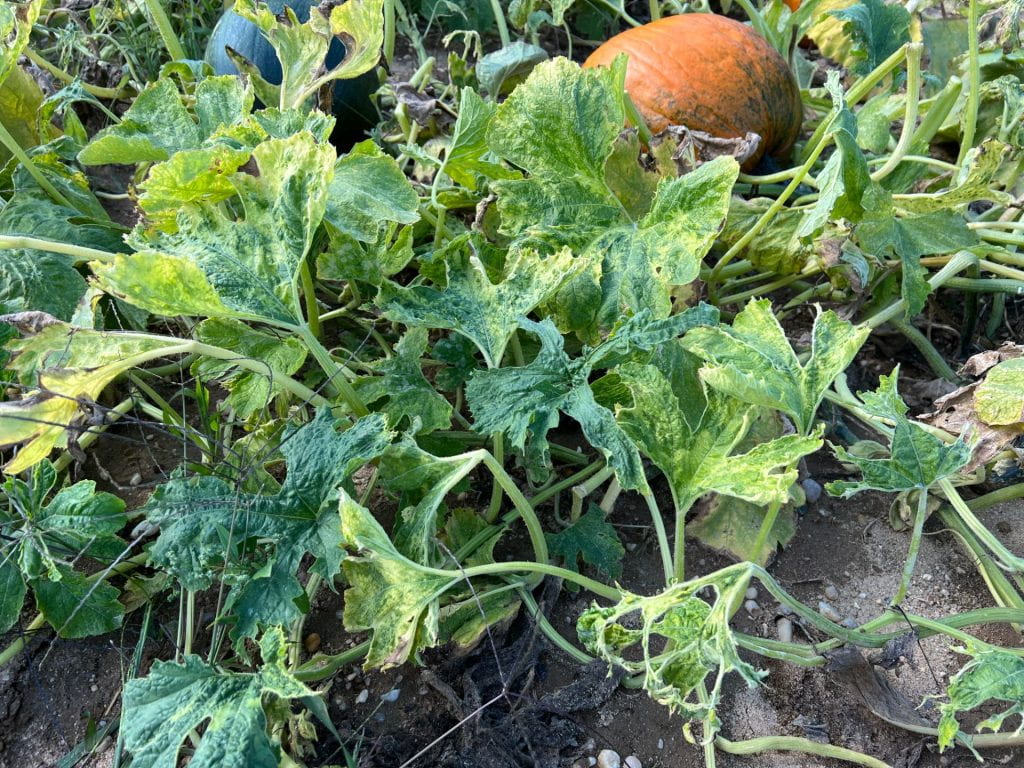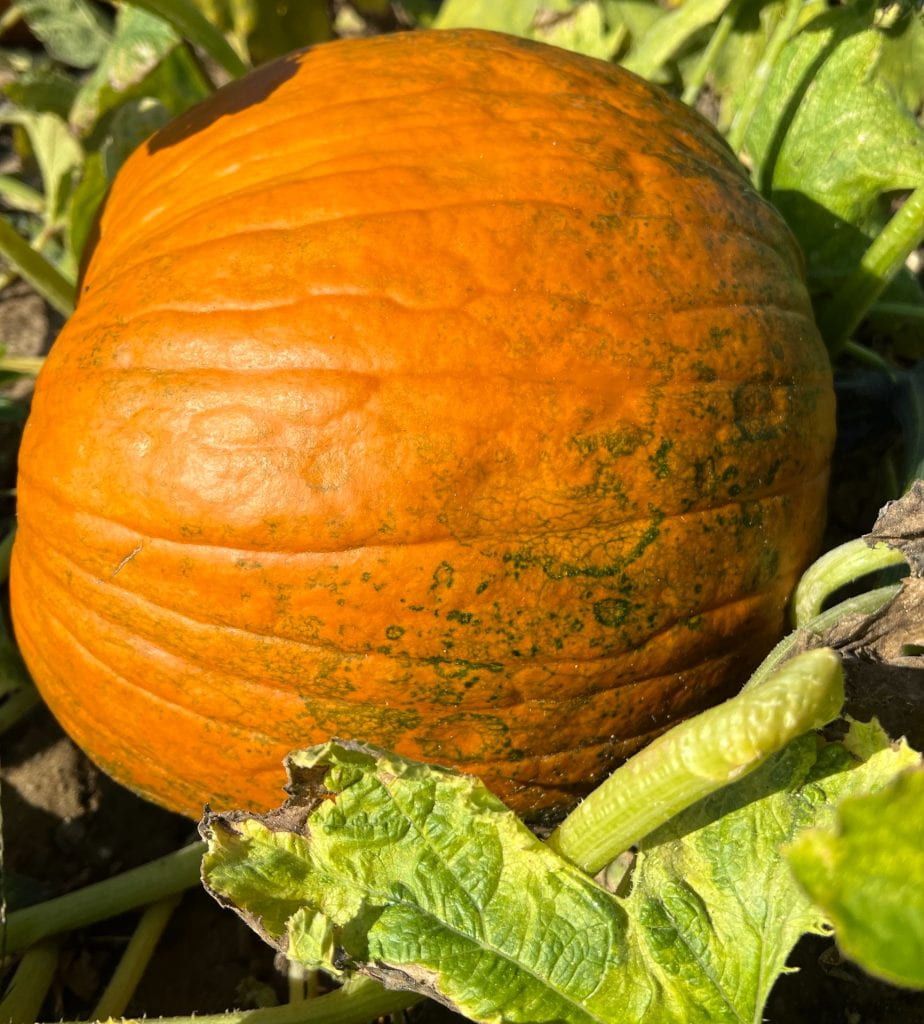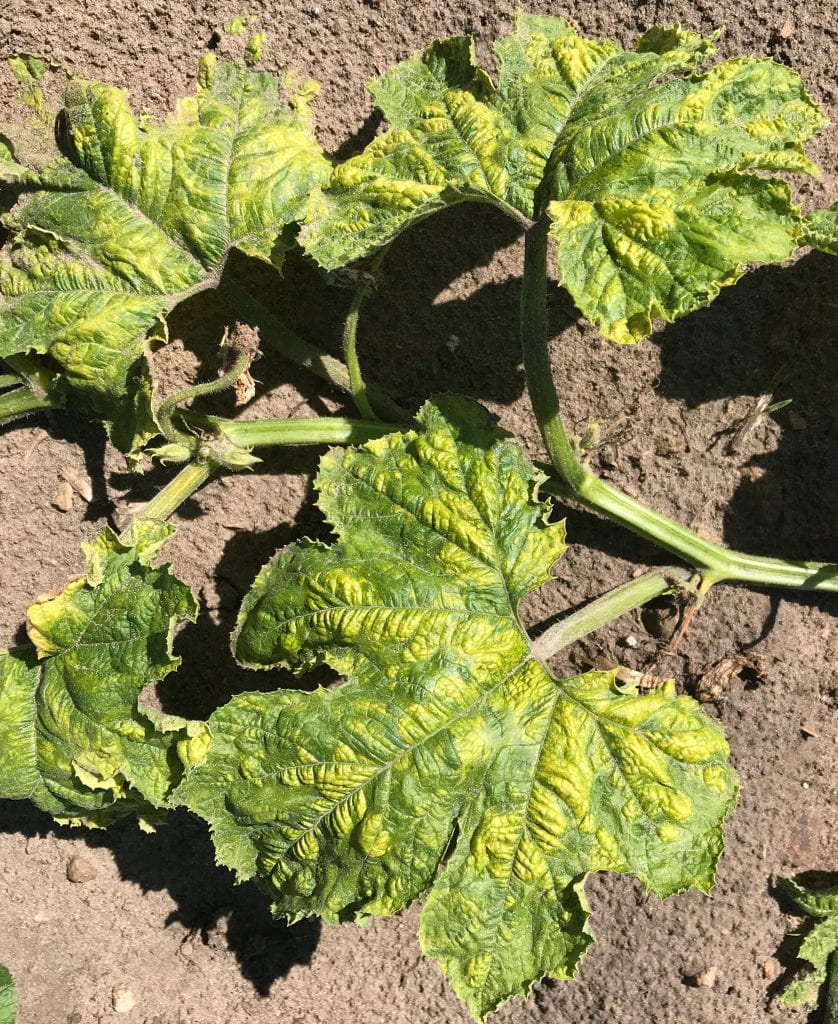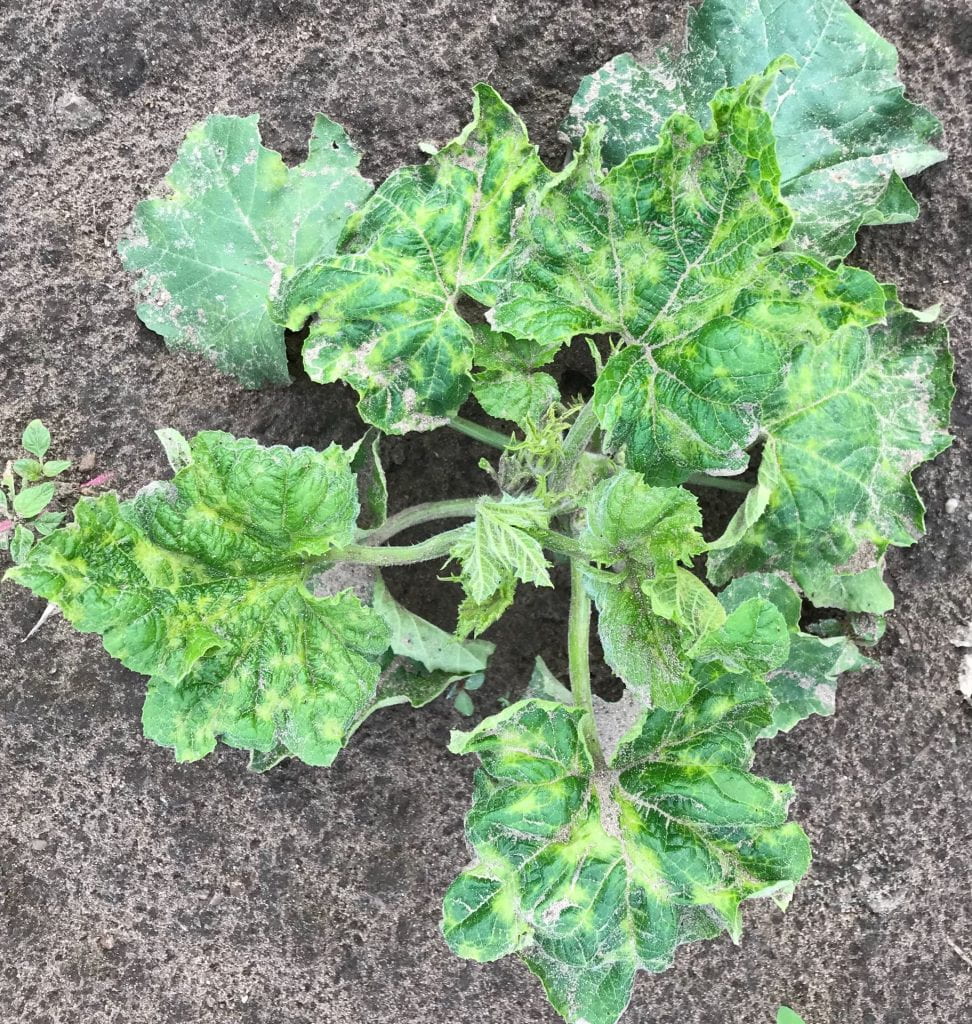Observing viral symptoms in cucurbit plantings on Long Island, and hearing reports of increased occurrence from extension specialists in upstate New York and New England, was the impetus for testing samples in 2022. Several viruses can infect cucurbits. They cannot be identified based on symptoms they cause. There are differences among these viruses in the type of insect that vectors them, what other plants are also hosts, and whether they can be seen-borne or mechanically transmitted (e.g. moved by handling infected and then healthy plants). Consequently, there are differences in their management program and thus it is valuable to know what virus(es) are responsible.
Leaves with viral symptoms were obtained during late September to early October 2022 from Long Island, western New York, eastern New York, and Virginia. Agdia immunostrips were used to test for cucumber mosaic virus (CMV), squash mosaic virus (SqMV), and zucchini yellow mosaic virus (ZYMV), plus the Agdia potyvirus test was run, which detects all viruses in this group. Potyviruses that affect cucurbits include ZYMV and watermelon mosaic virus (WMV). Agdia does not have immunostrips specifically for WMV. Photographs were taken of the leaves that were tested as well as other collected leaves. Some are posted below along with some photographs taken in the affected crops and of the immunostrips.
| Virus | Vector | Seed-borne | Mechanically-moved |
| cucumber mosaic virus (CMV) |
aphids |
no |
no |
| squash mosaic virus (SqMV) |
cucumber beetle |
yes |
yes |
| watermelon mosaic virus (WMV) |
aphids |
no |
yes |
| zucchini yellow mosaic virus (ZYMV) |
aphids |
yes |
yes |
Western New York. Leaves with typical viral symptoms were collected in an area where symptoms have been seen repeatedly on several farms over the previous about 5 years. Some fields have seemed particularly prone to occurrence suggesting the virus is surviving in weeds. Commonly symptoms have first been seen starting after transplanting. Tested leaf was from a farm where CMV and WMV had been detected in previous years. ZYMV had also been confirmed in the area. Aphids were not seen.
Only ZYMV was detected in the 1 sample tested in 2022.
Eastern New York. A total of 7 samples were tested from 2 squash, 1 gourd, and 3 pumpkin varieties at 2 farms in different towns. Viral symptoms were observed at these and some other farms in the area in previous years. Viruses appear to be becoming more problematic, especially at farms that also have orchards and high aphid populations, with some severe virus occurrences in 2021 and 2022, plus more widespread occurrence noted in 2022. Growers feel aphids may be moving from trees to cucurbit plantings. CMV was detected in previous years. Cold temperature the night before collection damaged leaves but there was sufficient good leaf tissue for tests.
CMV and ZYMV were detected in all 7 samples. SqMV was also detected in 1 sample. This sample was re-tested to confirm this result.
Long Island. Leaves with typical viral symptoms were collected from 3 locations in a commercial pumpkin crop and 6 locations in research squash and pumpkin plantings at LIHREC. Healthy-appearing pumpkin leaf from the research planting was also tested to serve as a negative control. Symptoms had been observed at the commercial location in recent years, but not at LIHREC. Aphids were not seen at either location. The commercial field has primarily been used for pumpkin production. The grower saw volunteer pumpkin plants and noted that variety ‘Field Trip’ appeared to be affected most. First symptoms seen at LIHREC were in ‘Zapallo del Tronco’ in a squash diversity study. Subsequently symptoms were seen in a few other entries and in an adjacent pumpkin experiment.
Only ZYMV was detected in the 3 leaves tested from the commercial crop and in the research planting of ‘Zapallo del Tronco’, which was assumed to be the source of the virus outbreak at LIHREC, therefore samples from other locations at LIHREC were only tested for ZYMV or the potyvirus group which includes ZYMV. All tests were positive. Since ZYMV can be seed-borne and viral symptoms were observed in the commercial field in previous years, volunteer pumpkin plants could have been the source of the virus there in 2022 rather than contaminated commercial seed. Spread at both sites might indicate aphids were present, and also possible virus was moved mechanically on hands or equipment.
Virginia. Leaves with typical viral symptoms were collected from 3 commercial pumpkin crops. One tested positive for CMV and ZYMV. Two tested positive only for the potyvirus group which likely means they were infected by WMV. The pumpkin variety ‘Field Trip’ was reported to commonly have symptoms of virus infection in VA.
Summary. ZYMV was most commonly found in New York in 2022. CMV was also common in eastern NY. Only CMV occurrence was associated with observation of aphids. SqMV was also detected in 1 sample from eastern NY. It is possible WMV was also present in samples with ZYMV considering these are both potyviruses. There is no Agdia immunostrip for WMV. There are many more viruses that have been detected in cucurbit plants worldwide. The 4 tested for in this study are considered the most likely to occur in the northeast currently.
Table with cucurbit virus survey sample information and results, 2022
| Agdia immunoStrip test results | |||||||
| Loc. | Town | County | Sample details | Poty | ZYMV | CMV | SqMV |
| WNY | Albion | Orleans | Pumpkin. Commercial crop 1. | + | + | – | – |
| ENY | Peru | Clinton | Pumpkin ‘Winter Luxury’. Sample 1. Commercial crop 2. | + | + | + | – |
| ENY | Peru | Clinton | Pumpkin ‘Winter Luxury’. Sample 2. Commercial crop 2. | + | + | + | – |
| ENY | Peru | Clinton | Pumpkin ‘Moonshine’. Commercial crop 2. | + | + | + | ND |
| ENY | Beekmantown/
Plattsburgh |
Clinton | Gourd ‘Autumn Wing’. Commercial crop 3. | + | + | + | + |
| ENY | Beekmantown/
Plattsburgh |
Clinton | Zucchini ‘Zucchini Elite’. Commercial crop 3. | + | + | + | – |
| ENY | Beekmantown/
Plattsburgh |
Clinton | Pumpkin ‘Iron Man’ or ‘Spooky’. Commercial crop 3. | + | + | + | – |
| ENY | Beekmantown/
Plattsburgh |
Clinton | Butternut squash ‘Quantum’. Commercial crop 3. | + | + | + | – |
| LI | Aquebogue | Suffolk | Pumpkin. Location 1 in Commercial crop 4. | + | + | – | – |
| LI | Aquebogue | Suffolk | Pumpkin. Location 2 in Commercial crop 4. | + | + | – | – |
| LI | Aquebogue | Suffolk | Pumpkin. Location 3 in Commercial crop 4. | + | + | – | – |
| LI | Riverhead | Suffolk | Cucurbita maxima ‘Zapallo del Tronco’. LIHREC Research planting 1. |
+ | + | – | – |
| LI | Riverhead | Suffolk | Cucurbita pepo ‘Hahat’. 5-27. LIHREC Research planting 1. |
ND | + | ND | ND |
| LI | Riverhead | Suffolk | Cucurbita pepo feral. LIHREC Research planting 1. | + | + | ND | ND |
| LI | Riverhead | Suffolk | Pumpkin leaf with mosaic symptoms. Location 1 in LIHREC Research planting 2. |
+ | ND | ND | ND |
| LI | Riverhead | Suffolk | Pumpkin leaf with mosaic symptoms. Location 2 in LIHREC Research planting 2. |
+ | ND | ND | ND |
| LI | Riverhead | Suffolk | Pumpkin leaf with subtle mosaic symptoms. Location 3 in LIHREC Research planting 2. |
ND | + | ND | ND |
| LI | Riverhead | Suffolk | Pumpkin leaf with no symptoms. LIHREC Research planting 2. |
ND | – | ND | ND |
| VA | Chesapeake | Northampton | Pumpkin. Commercial crop 5. | + | – | – | – |
| VA | Virginia Beach | N/A | Pumpkin. Commercial crop 6. | + | + | + | – |
| VA | Virginia Beach | N/A | Pumpkin. Commercial crop 7. | + | – | – | – |
+ = virus detected; – = test negative for the virus; ND = not determined.
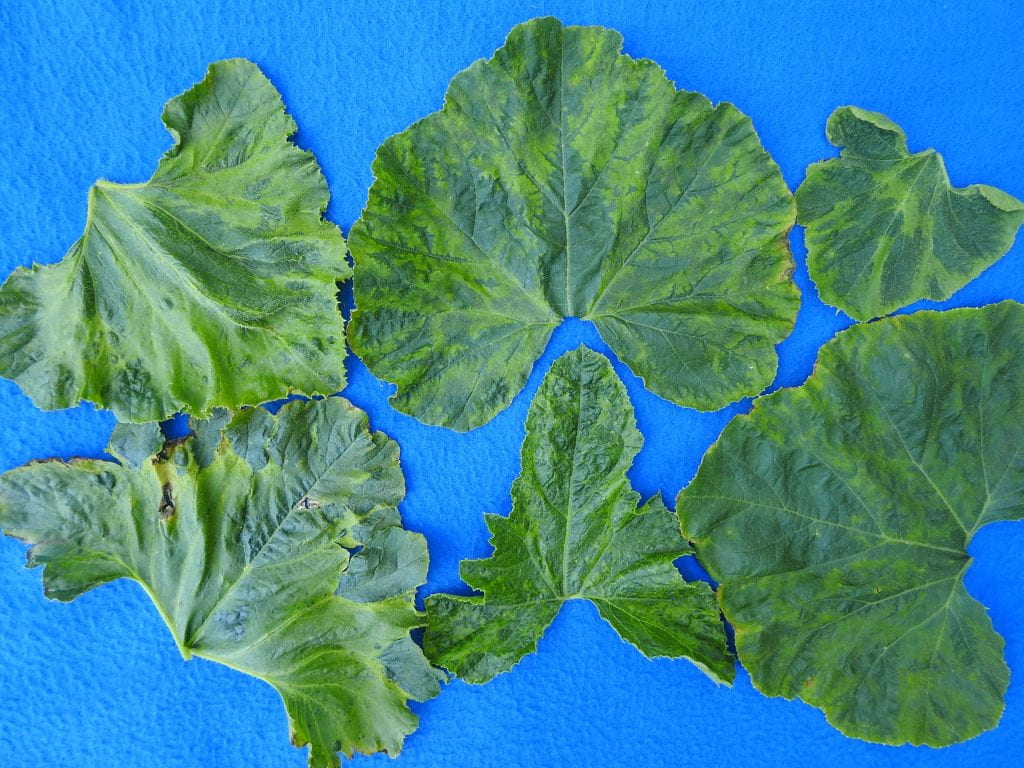
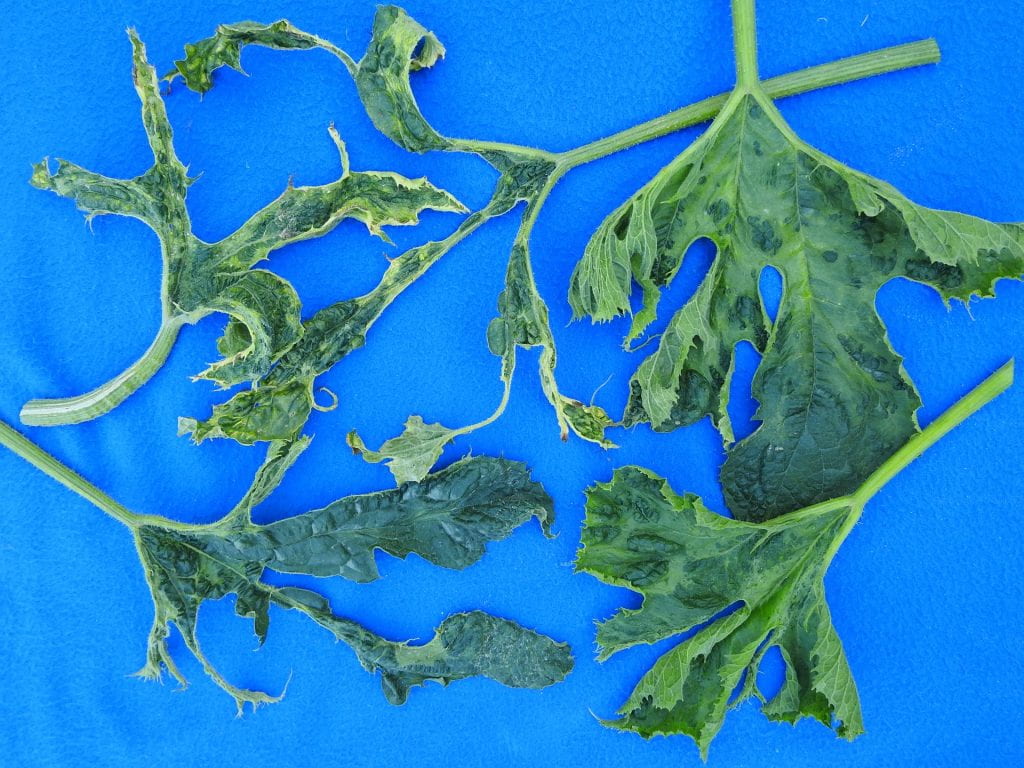
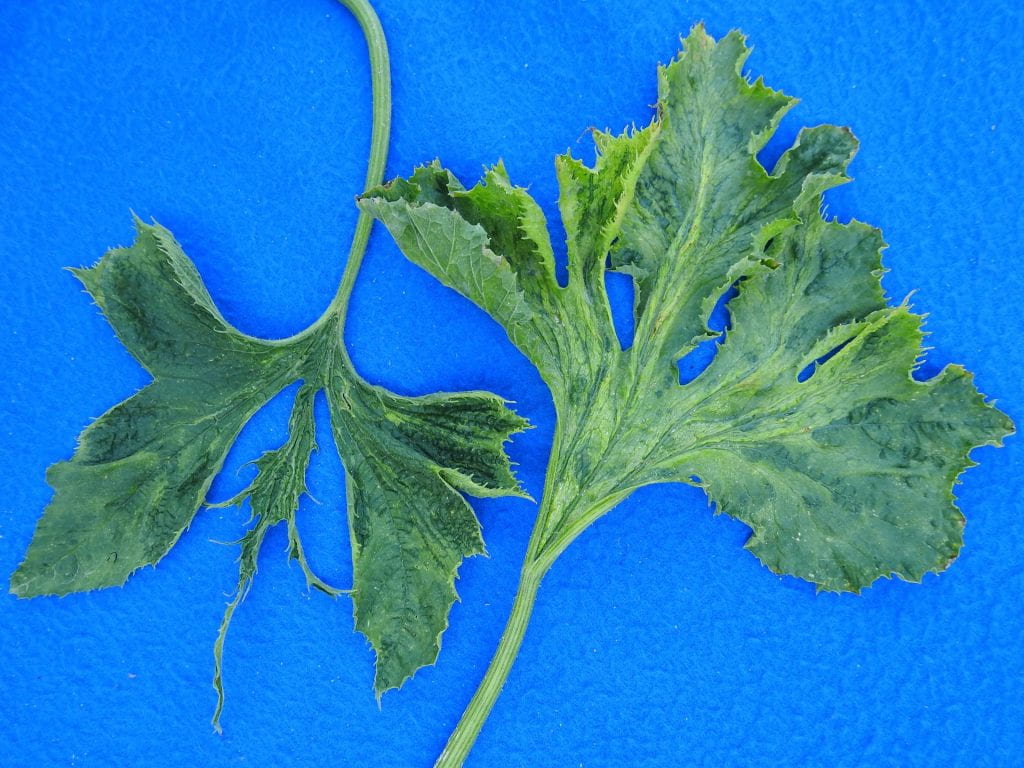


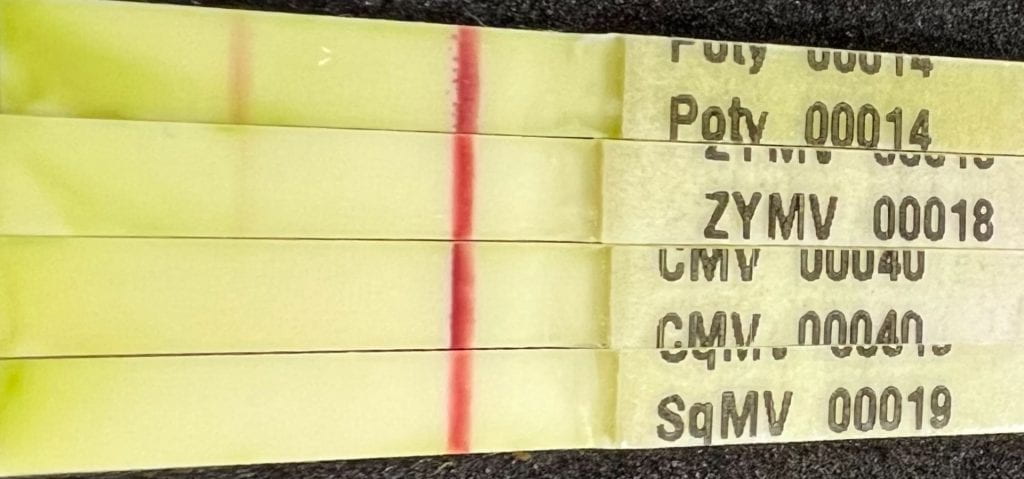
Following images of leaves and fruit with viral symptoms were taken in commercial crop 4 on Long Island, NY, while collecting leaves for testing.
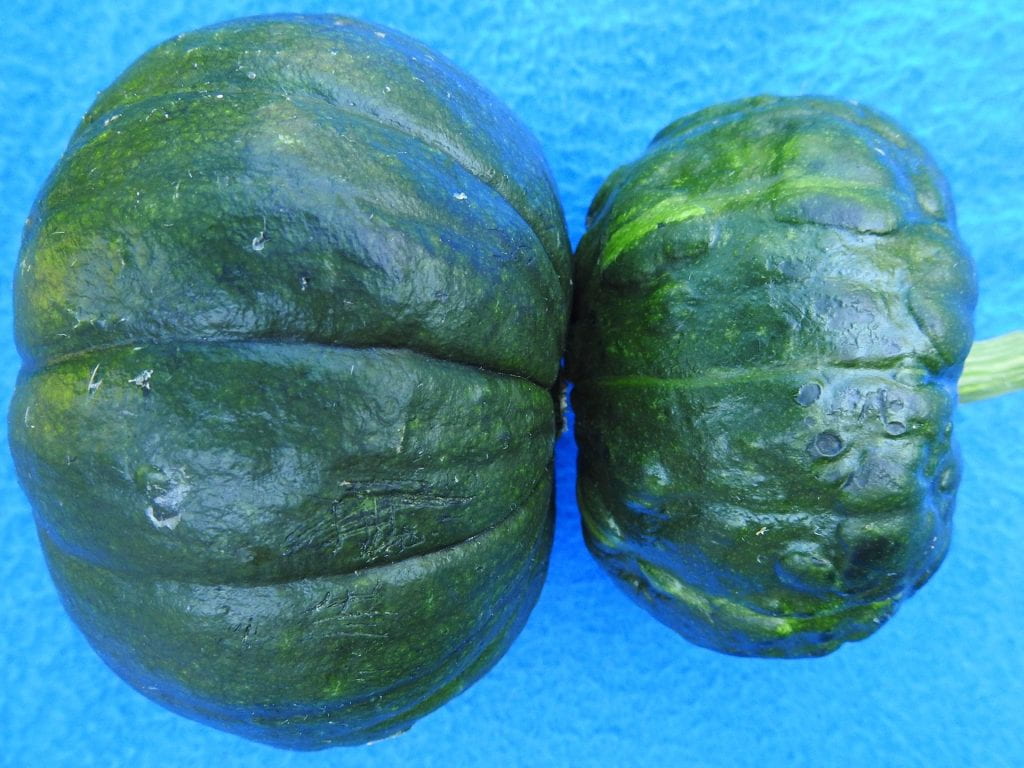
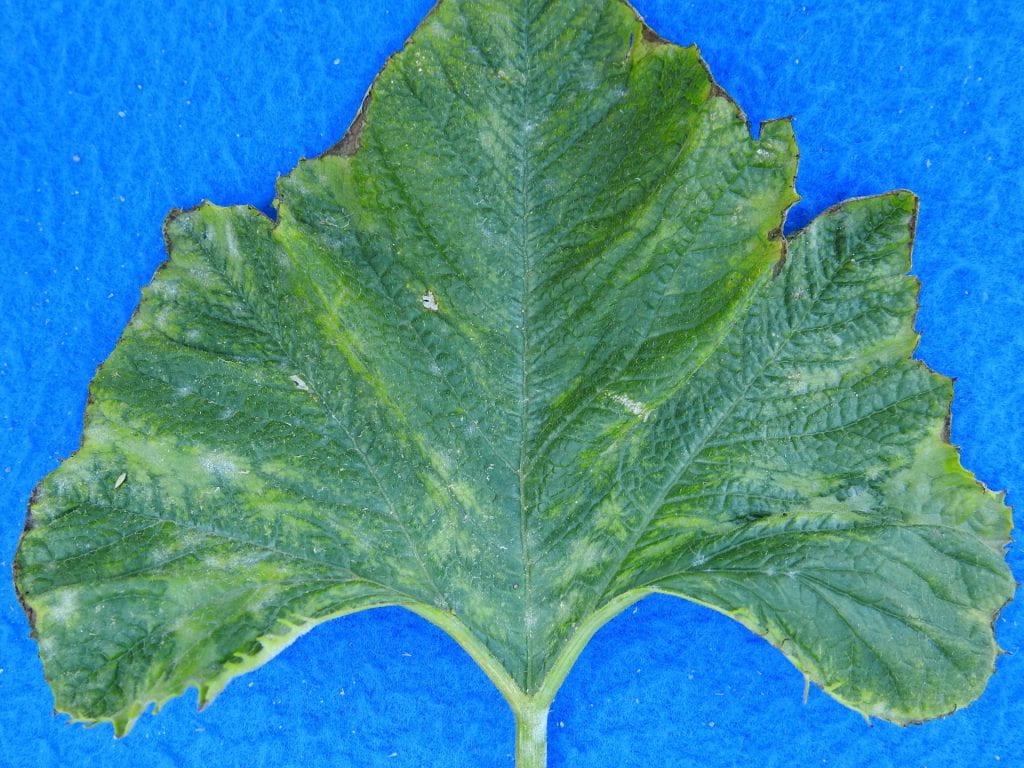
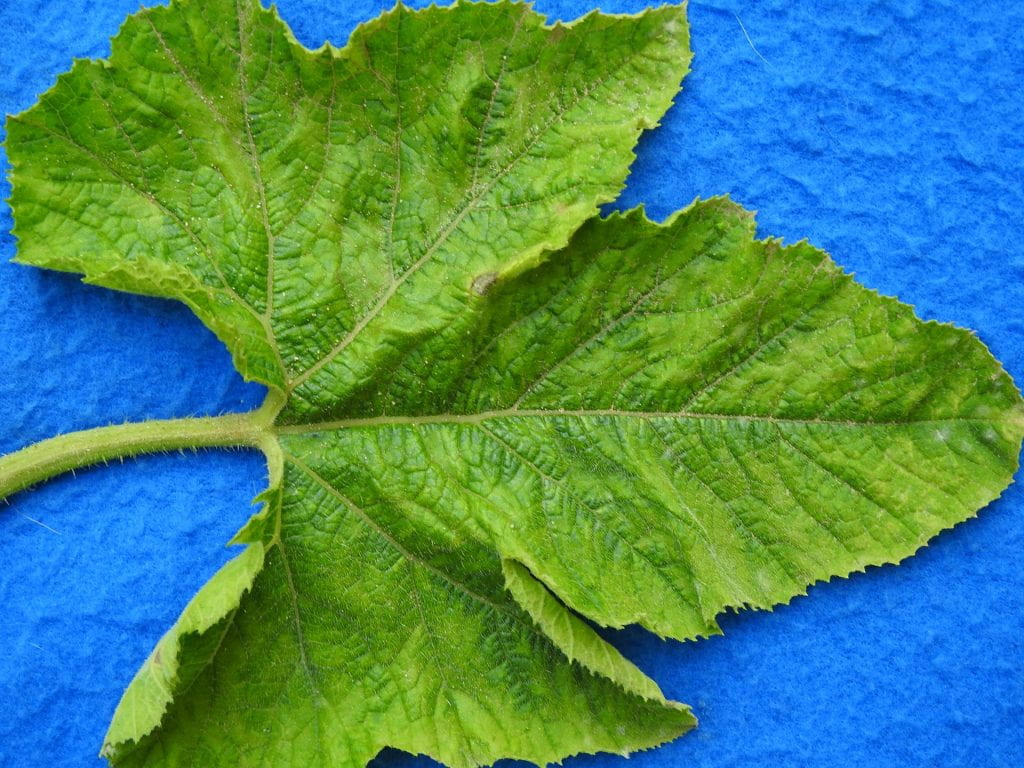
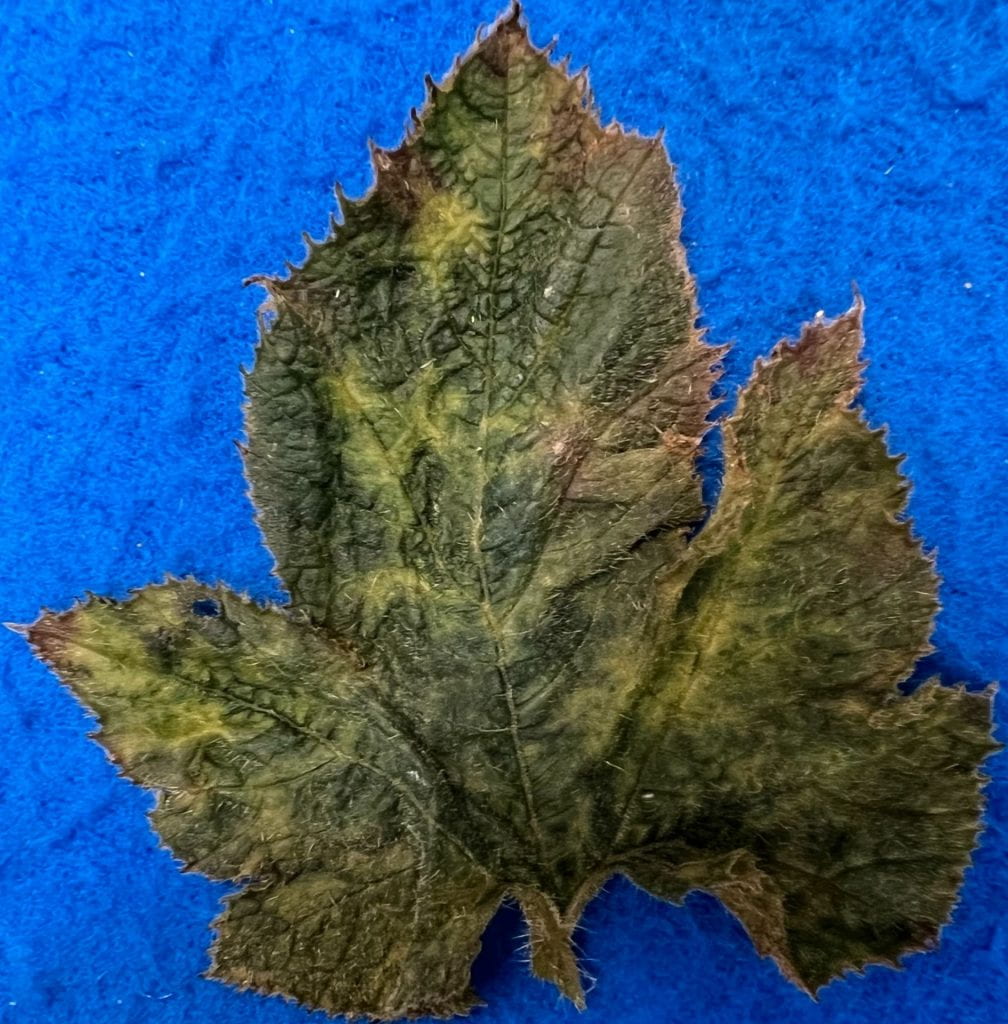

Following images of foliage with viral symptoms were taken in 2 commercial crops in eastern NY near the crops where samples were collected in the fall.


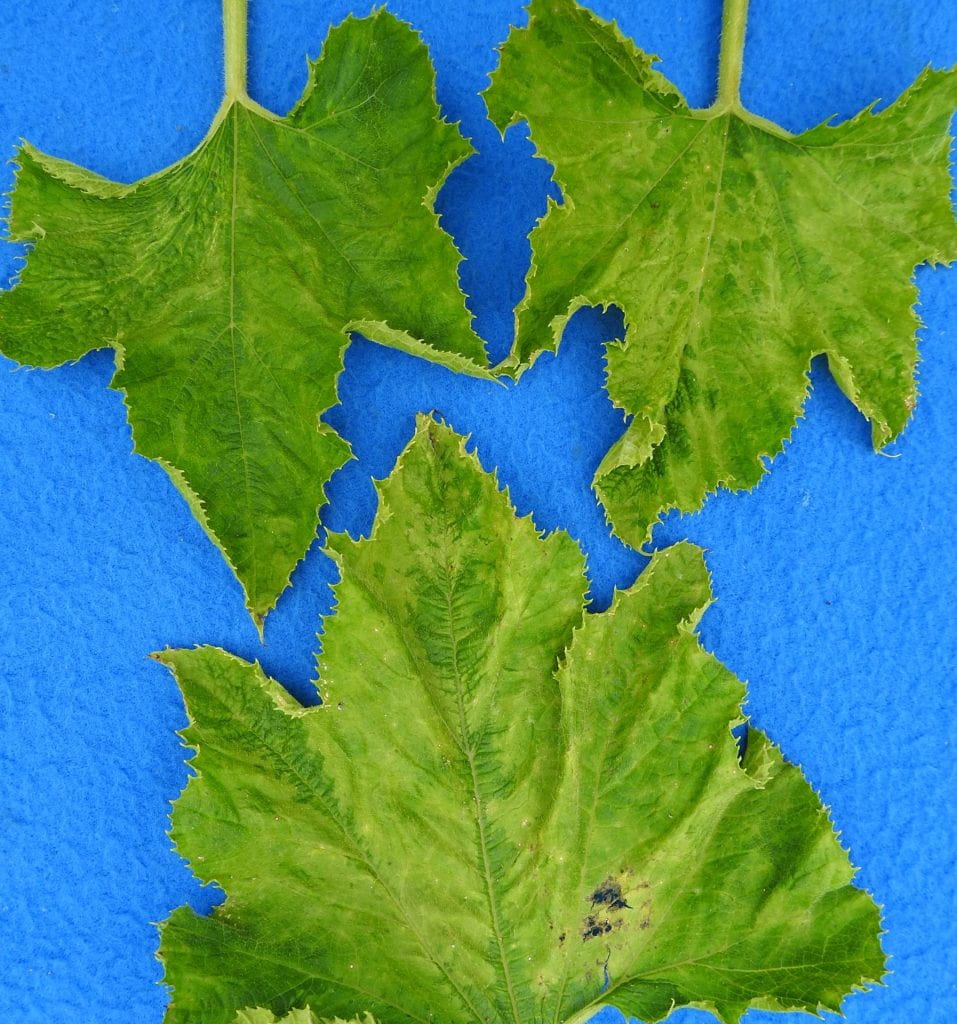

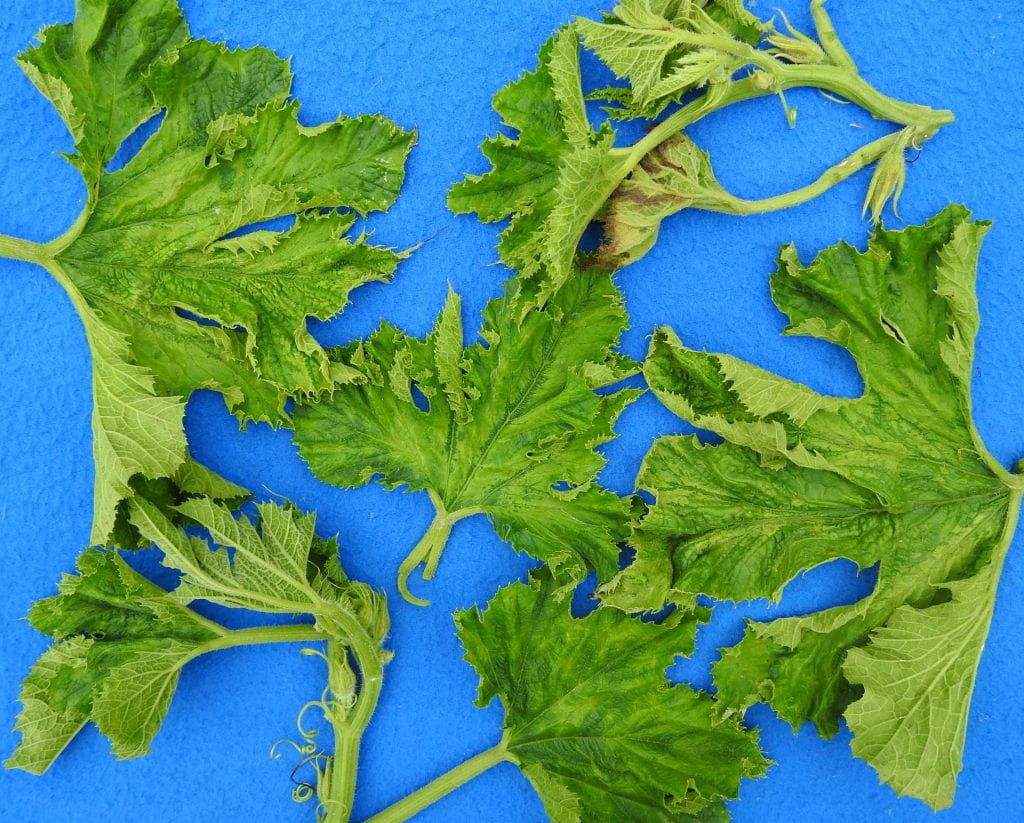
More information/prepared by:
Margaret Tuttle McGrathAssociate ProfessorLong Island Horticultural Research and Extension Center (LIHREC)Plant Pathology and Plant-Microbe Biology SectionSchool of Integrative Plant ScienceCollege of Agriculture and Life SciencesCornell Universitymtm3@cornell.edu



